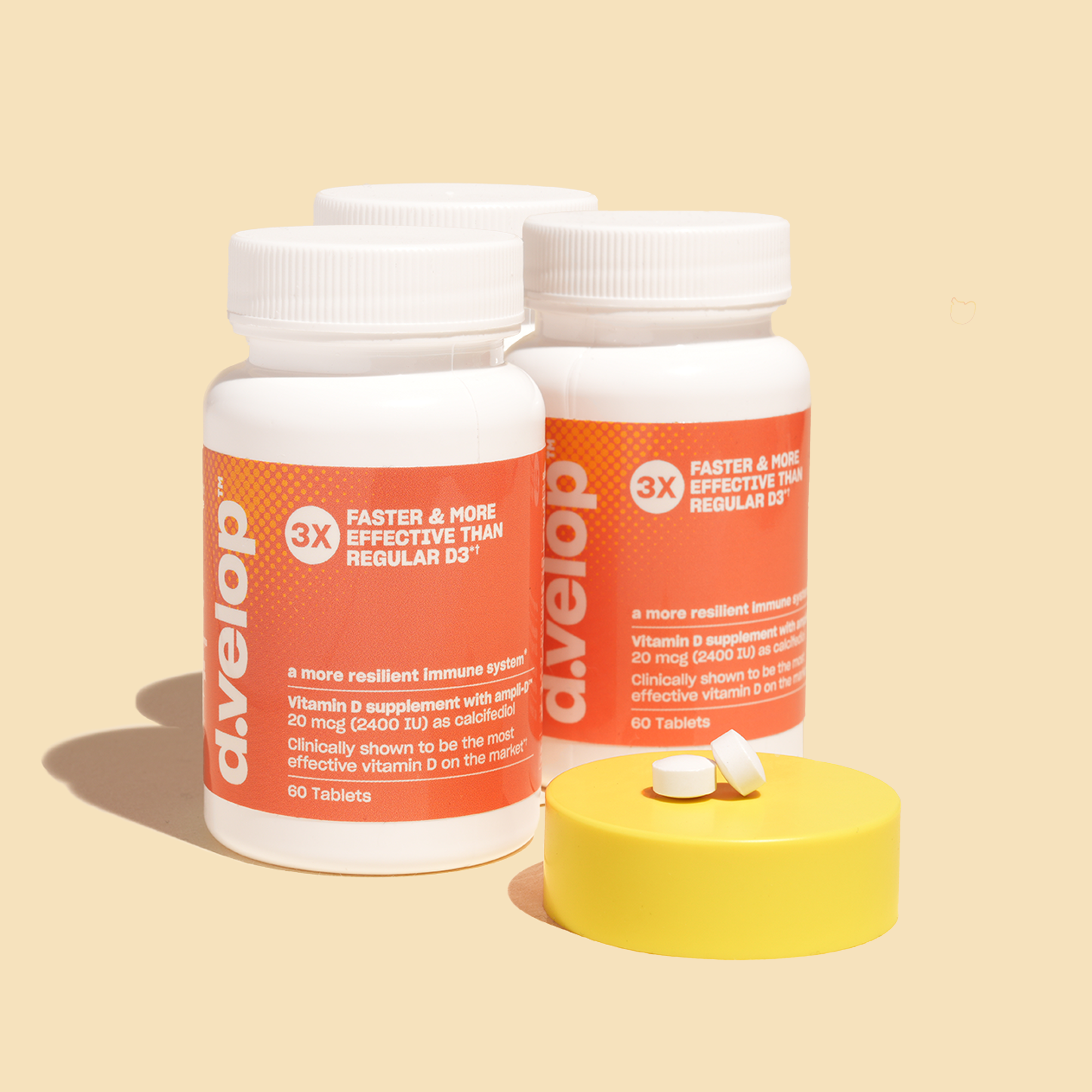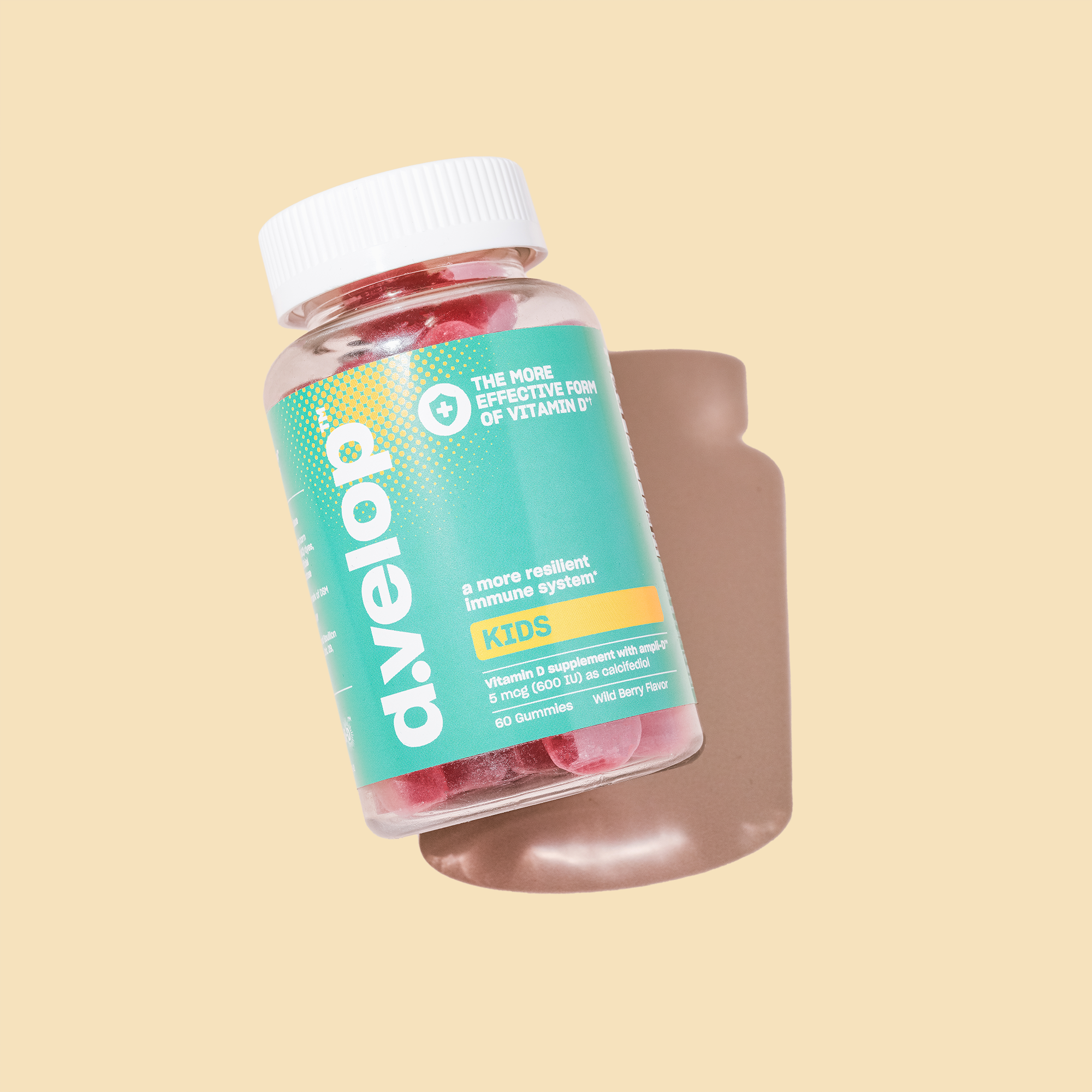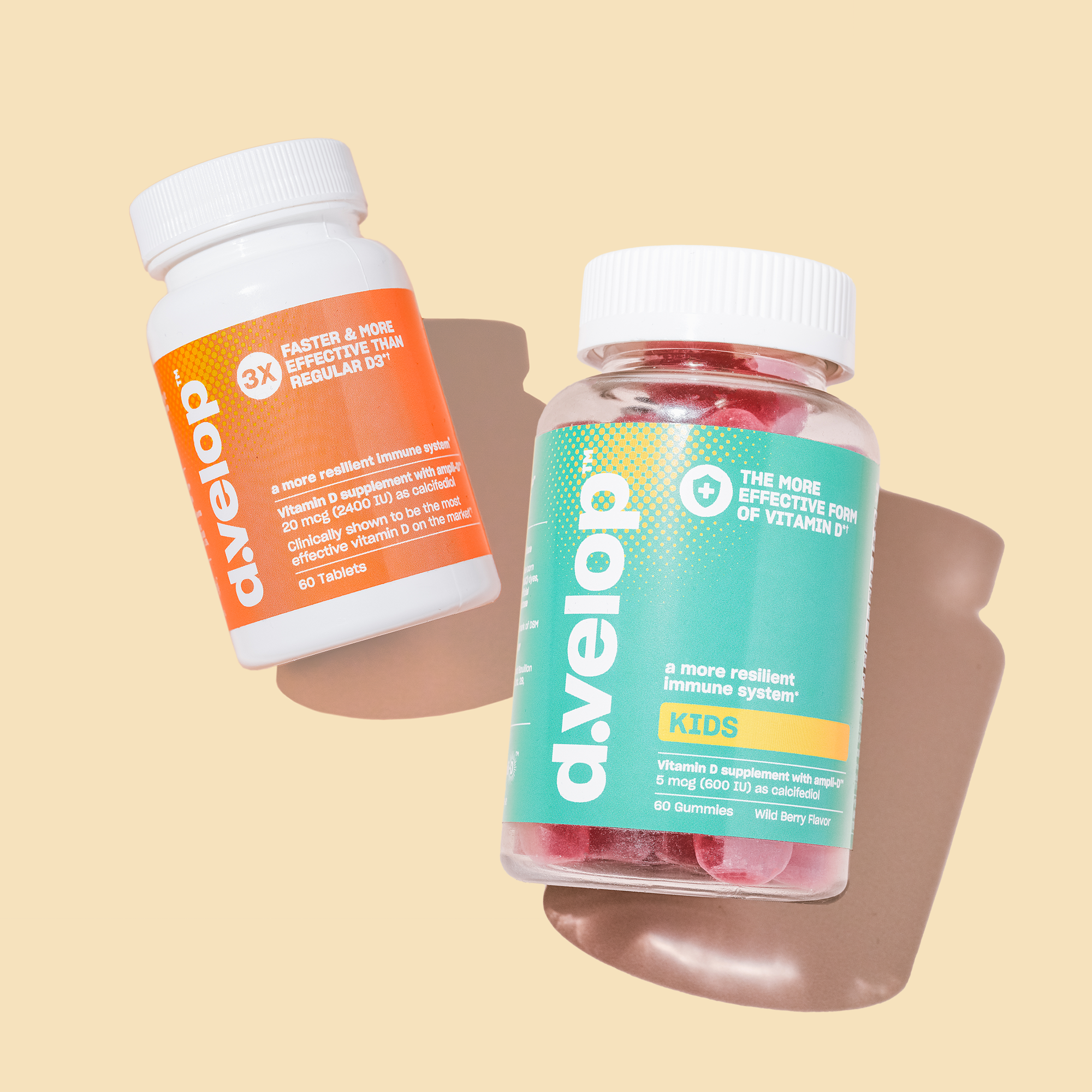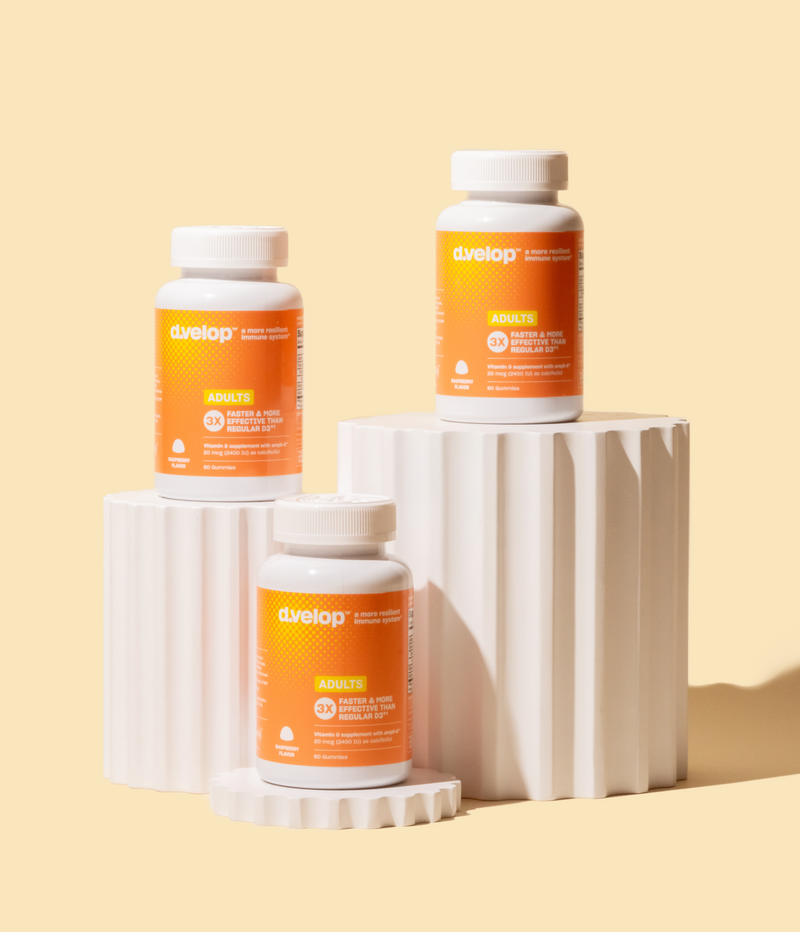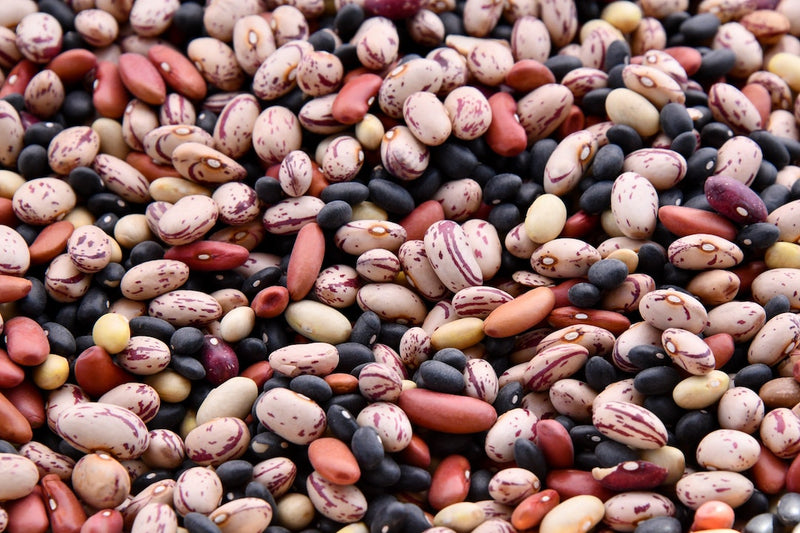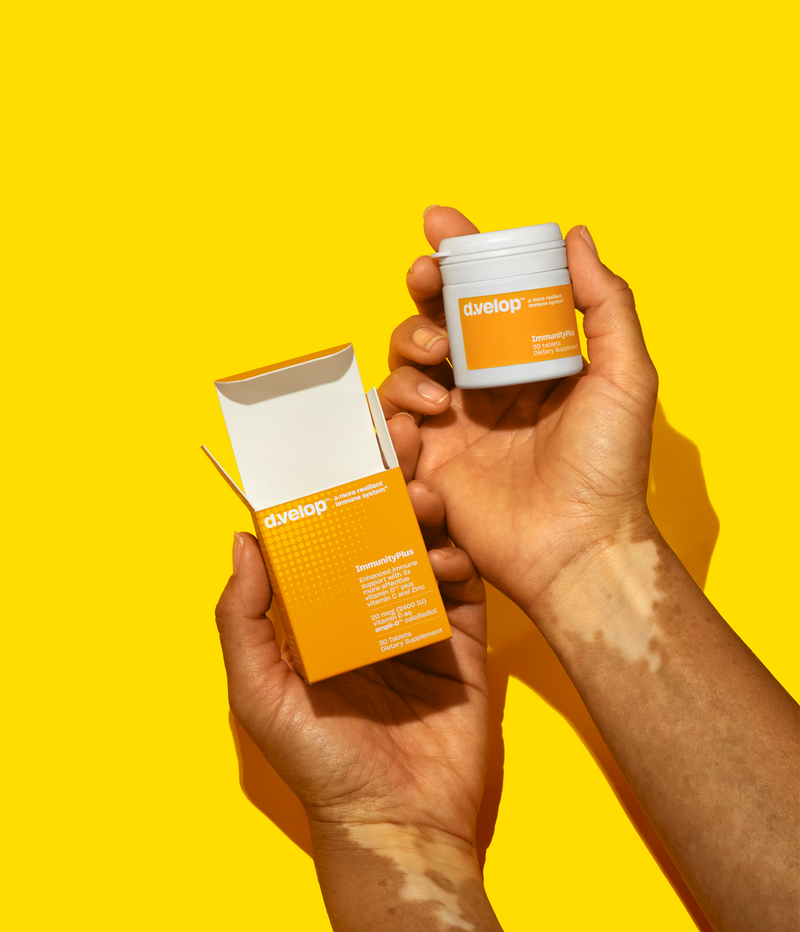Vitamin D plays many roles in the body such as helping the body absorb calcium to maintain the health of our bones and health, and supporting brain, nervous system, and immune functions. All of that sounds pretty important, right? Did you know that nearly 1 billion people world-wide have a vitamin D deficiency?
As we re-enter the world safely and get a taste of normalcy, proper function of our immune health is more important than ever. This leads to the question that everyone has: How can I boost my vitamin D level?
We know - adding vitamin D into your day is just one more thing to worry about, but don’t worry we made it easy for you!
Here are a few practical ways you can boost your vitamin D level that easily integrate into your day.
1. Spending more time in the sunshine for the WIN! Up to 90% of our vitamin D intake can come from our old buddy, the sun. We recommend doing this sensibly, of course. That percentage does depend on your location, time of year, and skin tone. We are exposed to sunlight in various amounts even when it is cloudy, or cold outside. Regardless of your skin tone, location, or if you see the sun shining, it is important to protect yourself from skin cancers by using sunscreen if you are outdoors for long amounts of time. There are currently no recommendations on the exact amount of sun exposure needed daily for vitamin D to be healthy. Due to the fact sunscreen limits the amount of vitamin D from sun exposure, dietary and supplemental vitamin D become important.
2. Eat foods that are naturally rich in vitamin D, like fatty fish (salmon, herring, mackerel, tuna, trout), cod liver oil, dairy products, beef liver, egg yolks, and mushrooms. Consuming vitamin D alongside meals with a source of fats can help to maximize absorption and effectiveness due to its role as a fat soluble vitamin. Here are some easy meals to incorporate into your weekly menu that include vitamin D and fats:
- Cereal with 2% milk
- Milk paired with a sun butter or peanut butter and jelly sandwich
- Salmon salad with olive oil vinaigrette
- Tuna salad with olive oil mayonnaise
- Egg and mushroom omelette cooked with butter or olive oil
3. Add foods fortified with vitamin D. Food fortification is defined by the WHO as: “the practice of deliberately increasing the content of an essential micronutrient, i.e. vitamins and minerals (including trace elements) in a food, so as to improve the nutritional quality of the food supply and provide a public health benefit with minimal risk to health.”
Dairy products, nut/soy milks, orange juice and cereals are typically fortified in the United States. Not all dairy sources like cheese (or our favorite ice cream) are fortified with vitamin D so make sure that it is listed on the nutrition panel.
Take a vitamin D supplement like d.velop™ vitamin D alongside a healthy, balanced diet. There is limited research on if there is a better time to take vitamin D, or with what meals, (morning, noon, or night). What is most important in order to help with improving vitamin D levels is that you are able to take it consistently, alongside a meal with a source of fats, at a time that works for you! Of course, before you take any new supplement we recommend you consult with your primary care physician.
Start some good habits with daily incorporation of vitamin D into your normal routine. We promise, your immune health will thank you.
- Holick, M. (2007). NEJM. 357:266-281
- Holick et al (2011). The Journal of Clinical Endocrinology & Metabolism, Pages 1911–193
- Ginde at al (2009). Arch Intern Med. 2009;169(6):626–632
- Charonnegam, Holick (2020) Nutrients; 12(7):2097
- Bischoff-Ferrari et al (2006) The American Journal of Clinical Nutrition, Volume 84, Issue 1
- DRI DIETARY REFERENCE INTAKES Calcium Vitamin D (2011). National Academies Press. p.443
- Hathcock et al (2007), The American Journal of Clinical Nutrition, Pages 6–18
- Dietary Reference Values for Vitamin D. European Food Safety Authority, (2016),14(10):4547
- Mendes et al. (2018). Nutrition Bulletin. 428-434
- Wacker, Holick (2013). Dermato-Endocrinology, 5:1, 51-108.
- National Research Council (US) Committee on Diet and Health: National Academies Press (US); 1989.11.
- WHO. (2006). Guidelines on food fortification with micronutrients. Xxviii.
